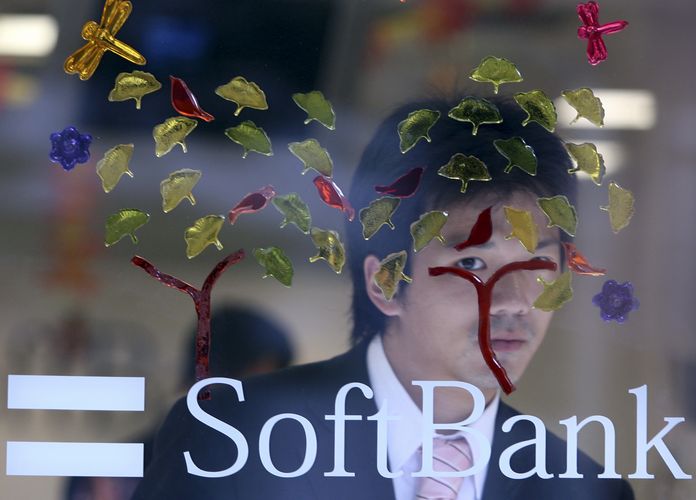Amid heightened volatility, SoftBank not only maintained its contact with the capital markets; it improved its credit quality as well.
To view the digital version of this report, please click here.
Japan’s third-largest mobile phone operator raised more than ¥1.14trn (US$14.53bn) from May 1 2011 to April 30 2012, according to Thomson Reuters data. Yet its business delivered solid cashflows that have firmly cemented its present standing in the investment-grade universe; a stark contrast to the cash-strapped, high-yield credit it was in the post-Lehman days.
Almost all of the debt is at the parent SoftBank, which has been raking in ratings upgrade after ratings upgrade during the interim. In November, Moody’s boosted the company to Baa3 and S&P followed in January 2012, lifting it to BBB, while Japanese ratings agency JCR promoted it to A in March this year.
As far back as April 2011, the company also saw an opportunity to refinance part of the ¥1.45trn whole business securitisation done in 2006 for the acquisition of Vodafone’s Japanese business at lower rates, despite it not coming due until 2016.
Acting through its subsidiary, SoftBank Mobile, it kicked off the refinancing process for the ¥745.5bn remaining share of the WBS and for another ¥200bn paid to buy back its own preferred shares from Vodafone, which had been completed at the end of 2010.
Three months later, it signed a ¥550bn self-arranged three-year term loan. While smaller than the initially anticipated ¥1trn deal, it still was the third-largest syndicated loan for the Japanese fiscal year 2011, which ended in March 2012. Moreover, at the time, SoftBank locked in its lowest loan pricing rates.
Although first priced at a margin of 112.5bp over the Tokyo interbank rate, based on the company’s Ba2/BB+ ratings, its upgrade to BBB– by S&P soon after ensuring a price stepped down to 90bp over.
Thanks to this refinancing exercise, SoftBank was freely able to access cashflow from its mobile business, which generated 65% of consolidated Ebitda in fiscal 2010, according to S&P.
That, in turn, firmly established its position as a well-established investment-grade credit and, in September, another ¥180bn one-year two-part revolver was rolled over.
Akin to a bond
Also in September, SoftBank energised the yen market with the first ever public hybrid offering in Japan. The jumbo ¥200bn sale of 200,000 perpetual callable preferred shares issued through SFJ Capital, a wholly-owned Cayman Islands-incorporated subsidiary, was the latest stage of the refinancing of the complex Vodafone Japan acquisition.
The perps, managed by bookrunner Mizuho and co-led by Deutsche Bank, were fixed at 2.04%, the lower end of 1.70%–2.70% guidance. Curiously, the deal was originated by the equity desk, but syndicated through the debt desk, akin to a bond. The issue was around 80% distributed to retail, with the remainder being placed with institutional investors.
The main reason for choosing to finance through a perp was to avoid turning subsidiary BB Mobile preference shares, which are booked as minority interests under Japanese GAAP, into debt. For that privilege, SoftBank paid a premium on the deal, compared with the 1% coupon on a chunky ¥100bn five-year retail bond done earlier in June 2011.
The preference shares can be called only in their entirety at par from May 22 2015. If uncalled, the dividend payment will step up by 100bp every year to a ceiling of 12%. That date was fixed following the recent four-year extension on the adoption of IFRS accounting rules, under which the preference shares would probably be booked as debt, not equity. But SoftBank’s plan is to finish paying off the acquisition of Vodafone Japan within four years.
“Investors already have big exposure on SoftBank. They can’t keep eating that much more from one single name; but it still offers some spread. Another positive sign is it could bring its net debt to zero quickly if it wasn’t for the buybacks. So investors want to be part of these deals as they have money to put to work”
As for the ¥100bn retail bond – only three months after the devastating earthquake that shut down the bond market for nearly two months – it was part of a larger ¥130bn wholesale/retail combination.
The company switched from its usual strategy of issuing longer institutional tranches, opting instead for the jumbo ¥100bn retail piece and pricing it right at the 1% magical threshold, roughly 40bp over yen swaps, or 57bp over JGBs.
As for the wholesale piece, it was a three-year that priced some 20bp tighter than the five-year and which achieved better results than expected. Coming with a coupon of 0.65% (JGBs plus 43bp), the tranche ballooned to ¥30bn from the initial ¥10bn on the back of a book close to ¥50bn.
JCR’s Single A classification meant SoftBank had become part of the bond indices. Thus, the final spread, near the lower end of guidance, surprisingly generated no criticism about its tightness as active index tracking funds jumped on the deal.
And that was only the beginning. In September, a ¥50bn two-year bond targeting institutional accounts sold at an eye-watering Libor-flat level. Part of the reason for that, however, was that the buyside was suspected of selling the paper into the Bank of Japan’s easing programme, which includes corporate bond purchases, to book profits on the name.
“Investors already have big exposure on SoftBank. They can’t keep eating that much more from one single name; but it still offers some spread. Another positive sign is it could bring its net debt to zero quickly if it wasn’t for the buybacks. So investors want to be part of these deals as they have money to put to work,” said Yusuke Ueda, credit analyst at Bank of America Merrill Lynch.
In addition, the borrower diversified some of its funding, securitising payments from mobile handset receivables and raising about ¥20bn in the one-year period.
SoftBank is aiming to have zero net debt by the end of March 2015 and it may not look too difficult, thanks to CEO Masayoshi Son’s vision that saw the company introduce the iPhone first in the land of the rising sun. But there are risks keeping investors vigilant too.
“SoftBank’s Triple B ratings don’t mean it’s in that category. It lives in a different world; it lives through its cashflows. There is a CEO risk rather than a credit risk there, as the CEO may decide to jump onto another big M&A. That’s what the current ratings are based on, rather than relying completely on fundamentals and its pile of cash,” added Ueda.

